Sponsored Listings:
I’ve been in Oaxaca for almost two months now, and with the calm comfort of time I have been exploring at leisure. There have been street food crawls and market wanders, cooking classes and long coffees with locals and expats to learn more about the city I currently call home. In the middle of these fluid days was a jam-packed week, when my mother planned a last-minute visit to town. We ate, we hugged, we drank a lot of mezcal, and we spent a whirlwind day of sightseeing: to the archeological ruins at Mitla, to the widest tree in the world, El Tule, and to Hierve el Agua.
Mineral pools and the smaller of the two petrified waterfalls.
Why are the falls called Hierve El Agua?
Initially, I was confused looking at these waterfalls because in Spanish, hierve means to boil. I expected boiling water over the side of a mountain, an endless loop. Instead, Hierve el Agua appeared to be frozen, cascading down the side of a cliff to the valley below.
After my visit, I learned that Hierve el Agua was created by mineral water that pushed through karstic limestone, depositing the falls onto the mountain’s edge. While the waterfalls are white, two mineral pools sit at the edge of the cliff, full of calcium carbonate, magnesium, and just enough sulphur to lend them a yellow hue.
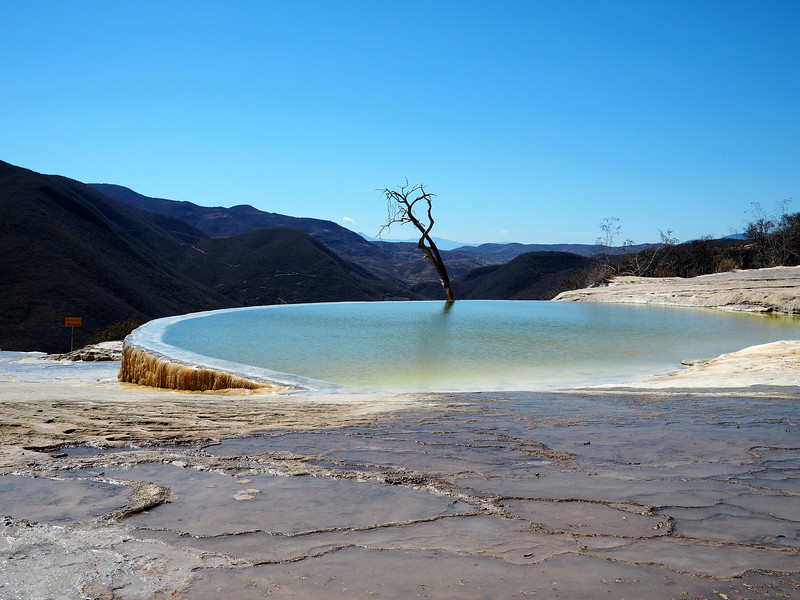
A little sulphur goes a long way.
Per the Oxford English Dictionary, the Greek word stalaktos means “to drip”. In the case of underground caves, rainwater trickles down, seeping through limestone and creating a calcite patch on the roof. In the case of Hierve el Agua, the process happened outside, with minerals that bubbled out from the middle of rocks, slowly calcifying over thousands of years into the rock formations that you see today. These ‘falls’ were named for the subtle phenomenon of mineral deposits “boiling” on the mountainside.
The name is slightly misleading because the springs aren’t actually boiling. They are heavily carbonated instead, with temperatures varying between 22-26C. To be fair they do spurt out from the rocks like boiling water might. And their nonthermal temperatures mean that swimming is a possibility. Yay!
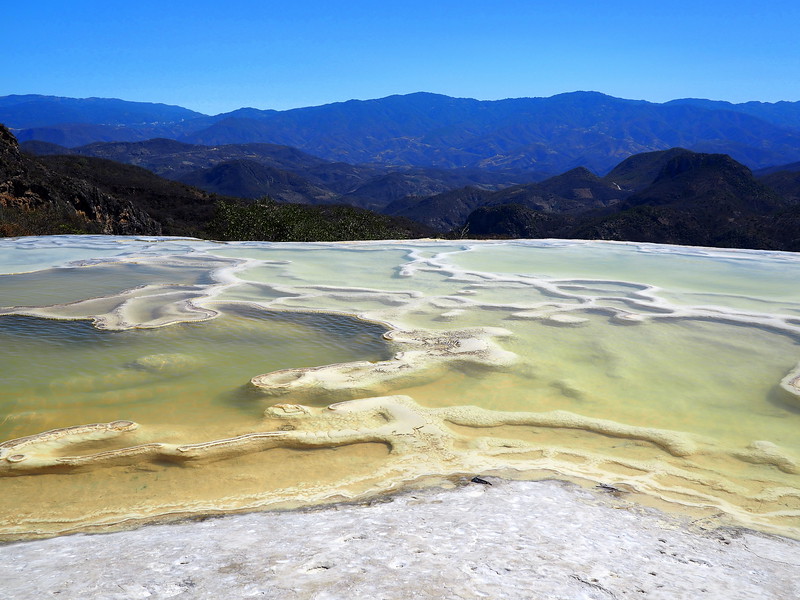
View of the mineral pools

This lone tree reminds of me of the Wanaka Tree on Lake Wanaka. Equally beautiful; different shades
Hierve el Agua might be a tourist destination today, but the bubbling springs used to supply water to an intricate series of canals and terraces leading down to the valley, comprising one of the most complete terraced irrigation sites in Mesoamerica. Archeologists suggest that the canal system was abandoned sometime in the 1300s, (source), with only traces of the canals remaining today.
Presently there are two falls to visit, a larger (called cascada grande) and a small one (called, you know it, cascada chica), which we visited at the same time. From the top of the mineral pools we hiked a short few minutes up, then looped around to the left to view the second, smaller fall from the other side of the rock’s edge.
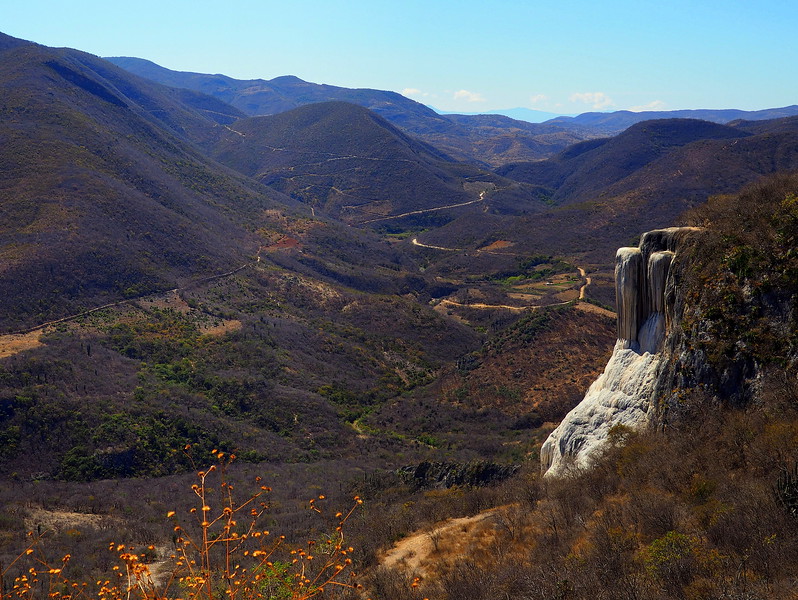
“Cascada grande” at Hierve el Agua

Agave from the short walk to the “cascada chica”.
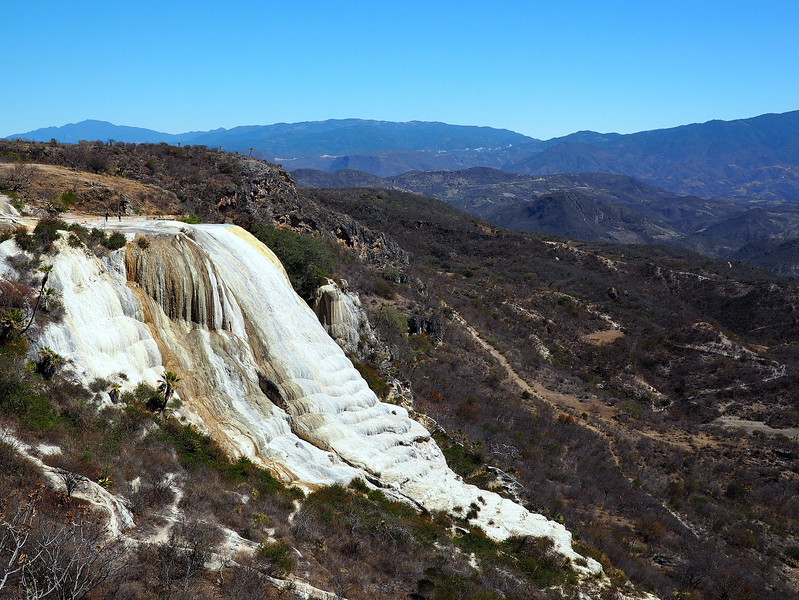
A view of the “cascada grande” from the other side of the cliffs.
We arrived early and I would suggest you do also, as the site gets awfully crowded during high season. There are changing rooms not far from the parking lot if you need to change into a swimsuit to take a dip in the mineral pools and cool off.
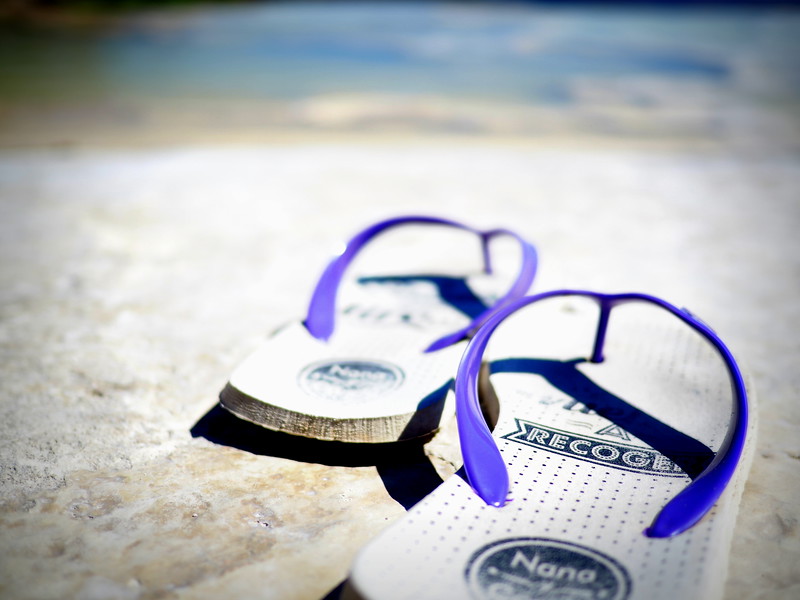
Someone left their flip flops after a swim in the pools! Made for a fun photo.
And because it’s me, I’d be remiss if I did not mention the food: there are stalls serve the usual corn snacks, perfect for the next leg of your journey: quesadillas, memelas, and more. We got ours filled with stringy quesillo, Oaxacan cheese, and squash blossoms. Also recommended for a snack: freshly chopped jicama, a delicious Mexican turnip that is faintly sweet and extremely refreshing, especially when dipped into a combo of chili, lime, and salt.
How to Get to Hierve el Agua
You have a few options.
The simplest is to hire a driver, and combine Hierve with other sights in the region, such as Mitla and the gorgeous El Tule Tree, the widest tree in the world. If you would like to use a driver, I have a trustworthy recommendation for you — just send me an email via the contact form on the site.
The cheapest would be to take a collectivo (shared taxi) from Oaxaca City to Mitla, then a shared van to Hierve El Agua. Note that the shared vans often go when they’re full, not according to a specific timetable.
Finally, you can opt to take an organized day tour to a bunch of the sights, which most hotels and hostels can book for you. This can be a bit rushed, and we opted to build our own with my mum, 2 friends, and a driver for the day.
A note about tolls: Note that there is now a new highway leading from Oaxaca to Hierve el Agua, and there is a toll of 49 pesos to take that new road. In addition, the pueblo of San Lorenzo Albarradas has put up what they refer to as road maintenance toll on the way to Hierve, which is an additional 10 pesos per person. Entrance to the springs are paid separately, at 20 pesos per person. And finally, if you do hire a driver, the parking at Hierve el Agua is 50 pesos per car.
Love Mexico and its food? Be sure to check out my hand-drawn maps of Mexican dishes, available in the Legal Nomads store.

Mother daughter visit to Hierve el Agua!
As day trips go, it was an excellent idea and if your time in Oaxaca allows for it, I would definitely recommend a visit.
-Jodi
Source: legalnomads.com










